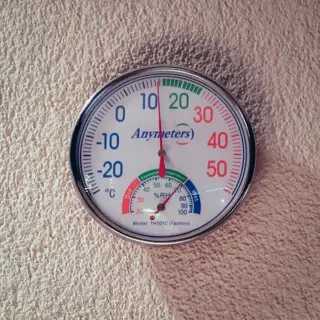When you’re back home after a long day, all you want is to kick off your shoes and unwind in a cozy, comfortable space. However, unbeknownst to many homeowners, an unseen element might be stealthily undermining that comfort – humidity. Now, we’re not talking about the sort of humidity that turns a summer day sticky, but the kind that hangs in your home’s indoor air. Too much of it, and you’ve got a problem on your hands.
But don’t worry! We’ve got you covered. Here’s your blueprint for taming that unruly humidity, ensuring your home remains your cozy haven.
Humidity Levels – Why Care?
Our bodies are like precision instruments, calibrated to function optimally under specific conditions. The wrong humidity levels can throw us off balance, making us feel sluggish and even promoting the growth of unwanted guests like mold and bacteria in our homes.

So, what’s the right level of humidity? The Environmental Protection Agency (EPA) recommends keeping indoor humidity between 30%-50% during warmer periods and reducing it to 15-30% during colder times to prevent frost formation on your windows and walls.
We recommend investing in a simple, inexpensive hygrometer to stay on top of your home’s humidity. It’s like a speedometer for your air – helping you keep tabs on your humidity levels.
Where’s the Humidity Coming From?
Before you can combat humidity, you need to understand where it’s coming from. Humidity can sneak into your home from a variety of sources. Outdoor humidity might be seeping in through your windows and doors. Poor ventilation can trap moisture, causing dampness to spread. Your house could also silently soak up moisture from leaky pipes or condensation on your windows and walls.
Even your everyday activities can contribute to the humidity. From cooking and showering to running appliances and drying clothes indoors… it all adds moisture to your indoor air. By identifying these sources of humidity, you’re taking a valuable first step towards a healthier, more comfortable home.
What Can You Do About It?
Now, for the hands-on part: here are 11 strategies to help you keep humidity levels in check. Think of these as a manual for maintaining your home’s comfort.
Weather-related Humidity
- Use Your Air Conditioner: An air conditioner isn’t just for beating the heat. It also helps lower humidity by pulling in warm, moist air, removing the moisture, and blowing out cooler, drier air.
- Try a Dehumidifier: If it’s humid but not particularly hot, a dehumidifier can be a big help. It pulls excess moisture out of the air, helping to maintain comfortable humidity levels.
- Ventilate Your Home: Just as a breeze can clear smoke, good ventilation can reduce dampness. Use fans, open windows, and let the air circulate.
- Fix Leaky Pipes: Like a dripping tap wasting water, a leaky pipe adds unwanted moisture. Keep an eye on your bathrooms, kitchens, and laundry areas for any signs of leaks, and fix them as soon as possible.
- Insulate Your Walls and Roof: Insulation helps to prevent warm, moist air from condensing when it meets a cooler surface – a bit like how a cold soda can “sweat” on a hot day.
- Use a Moisture Barrier: Moist soil around your home can contribute to indoor humidity. Laying down a thick plastic sheet can prevent dampness from seeping into your walls.
- Run Exhaust Fans: In your kitchen and bathroom, exhaust fans can whisk away humid air and send it outside, keeping indoor air fresh and dry.
- Dry Clothes Outside: Drying clothes indoors adds to the humidity. Whenever possible, hang your laundry outside and let Mother Nature do the drying for you.
- Cook Smart: Keep pots covered while cooking, let hot food cool before uncovering, and consider using a slow cooker. Wash dishes with warm or cold water to minimize steam.
- Move Your Plants: While we all love a bit of greenery, plants can add moisture to the air. Consider moving them outside or covering the soil to limit evaporation.
- Use Desiccants: These are materials that soak up moisture from the air. You can place bowls filled with unused kitty litter, calcium sulfate, or silica gel around your home to help keep things dry.
Indoor Air Circulation
Structural and Maintenance Tips
Day-to-day Activities

Final Thoughts
Remember, maintaining the proper humidity levels in your home is an ongoing process. But with these tips and a bit of vigilance, you can keep your home comfortable and cozy all year round. After all, there’s no place like home, especially when it’s just right!

